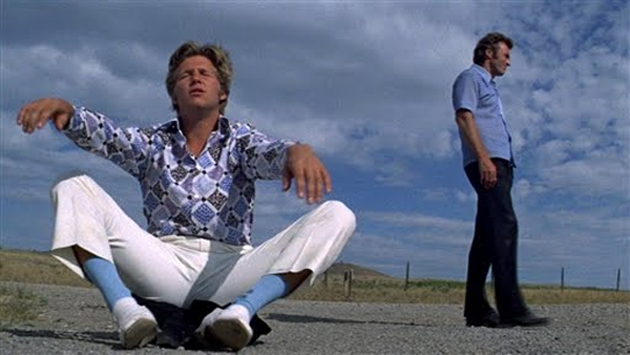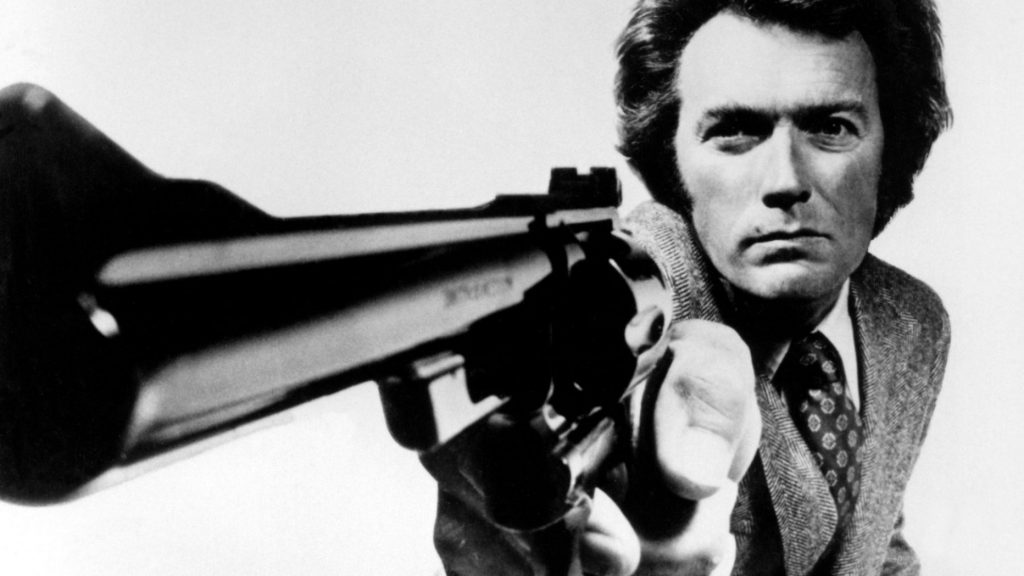THUNDERBOLT AND LIGHTFOOT (1974)

“You know somethin’? I don’t think of us as criminals, you know? I feel we accomplished something. A good job. I feel proud of myself, man. I feel like a hero.” — Lightfoot
Until this point, Eastwood’s films are easily identifiable by style and tone as being within a particular family: westerns, cop dramas, romances, etc. The only exception thus far would perhaps be The Beguiled, but there’s a case to be made for its place in the psychological horror club. But you’d be excused, should the conversation arise, for not quite knowing how to categorize Thunderbolt and Lightfoot.
It begins with elements of screwball comedy and buddy-road movies before shifting to the realms of introspective drama and heist films. It isn’t until the final few moments of the film that you realize you’ve actually been witnessing the life cycle of a friendship: the rare drama which centers around a relationship between two men which is intimate without being sexualized and affecting without being manipulative.
When we first meet the titular characters of Thunderbolt (Eastwood) and Lightfoot (Jeff Bridges), Thunderbolt is posing as a small town preacher trying to lay low while being pursued by three of his former heist partners. A coincidental encounter forces Thunderbolt on the run again, directly crossing paths with the affable and carefree young Lightfoot. The two of them embark on a road adventure attempting to flee Thunderbolt’s old partners, eventually being overtaken by them and coerced into one last payday heist.
There is an episodic quality to the narrative, which was scripted and directed by Michael Cimino (who had previously impressed Eastwood with a written draft of Magnum Force and would go on to win an Academy Award for The Deer Hunter). Each new plot wrinkle has a distinct flavor, ranging from comedy to thriller and back down to drama, culminating in a climactic heist with irrevocable complications. At first viewing, these shifts in tone almost seem disjointed and unfocused, and I’ll admit I walked away from that initial viewing somewhat unimpressed.
But a bit of reflection, particularly on the film’s surprisingly emotional conclusion, produces a kind of retroactive appreciation for all that you’ve seen before it. You thought you’d been watching a disconnected menagerie of moments and sequences with little to no discernable relationship. But it is precisely the relationship between Thunderbolt and Lightfoot that has been the focus of the story: two friends from different walks of life colliding and irrevocably changing each other in ways they couldn’t possibly have predicted. What we’ve seen – the humor, the adventure, the suspense, and the melancholy – have been the rhythms and seasons of all the best friendships in their time.
Eastwood himself delivers a strong performance, balancing toughness and tenderness with ease as the narrative calls for it. Jeff Bridges, however, — in an Oscar nominated performance – is the heart and soul of the story. Lightfoot relates to Thunderbolt as father-figure, older-brother, and best bud all at once as the two of them explore, escape, and enterprise together. Likewise, Thunderbolt takes Lightfoot under his wing and you can easily track a steadily growing affection between them that the two actors capture with effortless verisimilitude. There was apparently some disappointment on Eastwood’s part when the Academy recognized Bridges but not him. However, despite Eastwood’s sensitive and appropriately anchored performance, Bridges is the unquestionable scene-stealer, especially as the film draws towards its inevitably heart-tugging finale.
Thunderbolt and Lightfoot is a strong film, but very of its time. It’s saturated with the sensibilities and thematic concerns of the seventies, and is likely to distance some viewers with its episodic nature. But for those who appreciate films which take their time developing their disparate ideas and trust their audience to go there with them, there are some genuine rewards to be had in the journey. I saw this film in a marathon with three other Eastwood features and after a week’s reflection, Thunderbolt and Lightfoot was the one to which my heart and mind kept returning.
 Reed Lackey is based in Los Angeles, where he writes and podcasts about film and faith. His primary work is featured on the More Than One Lesson website and podcast, as well as his primary podcast, The Fear of God (which examines the intersection between Christianity and the horror genre). Follow him on Twitter or on Facebook to receive updates on his reviews and editorials.
Reed Lackey is based in Los Angeles, where he writes and podcasts about film and faith. His primary work is featured on the More Than One Lesson website and podcast, as well as his primary podcast, The Fear of God (which examines the intersection between Christianity and the horror genre). Follow him on Twitter or on Facebook to receive updates on his reviews and editorials.


